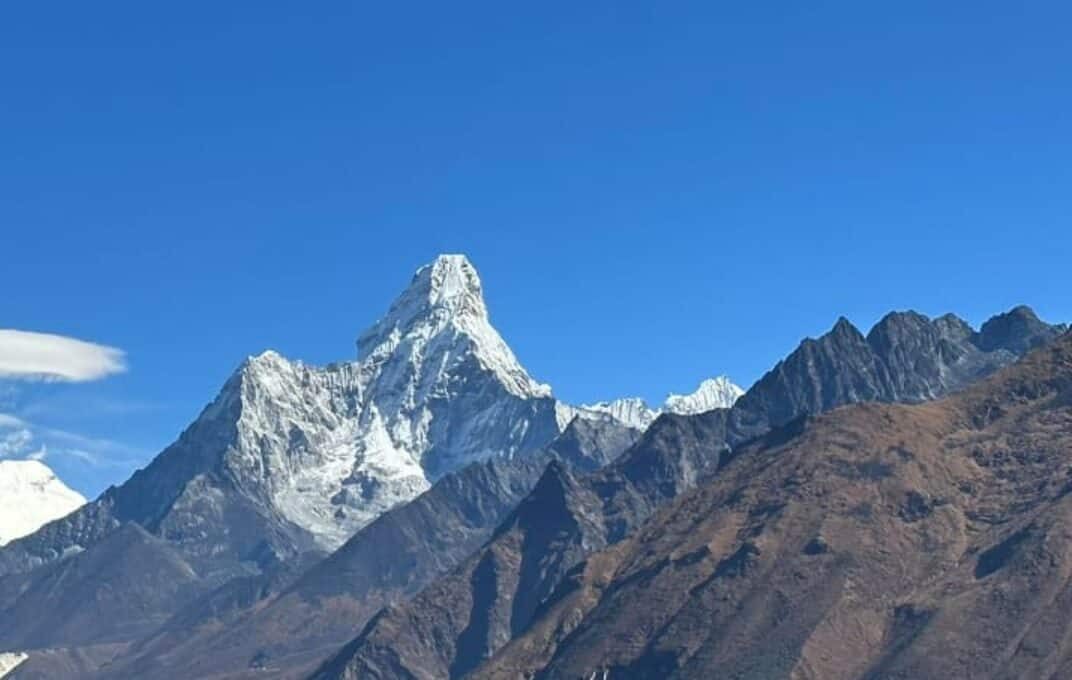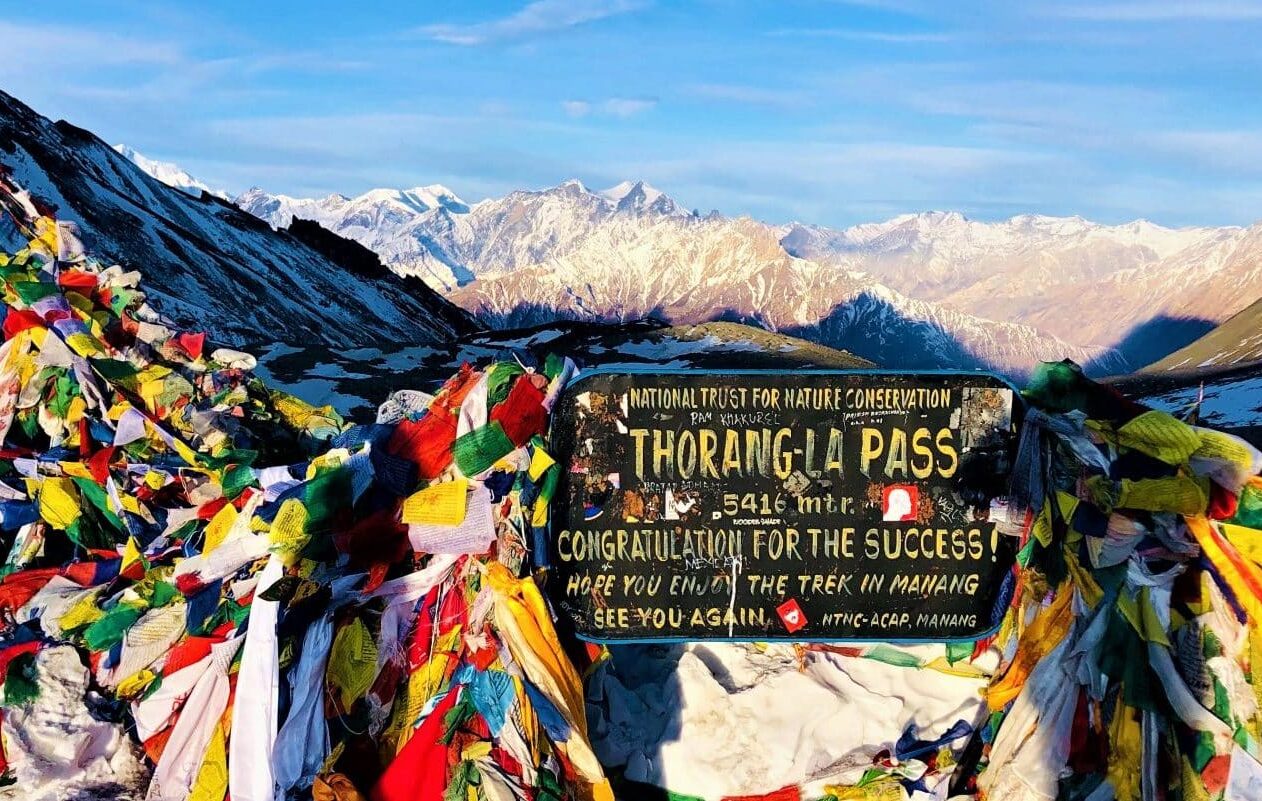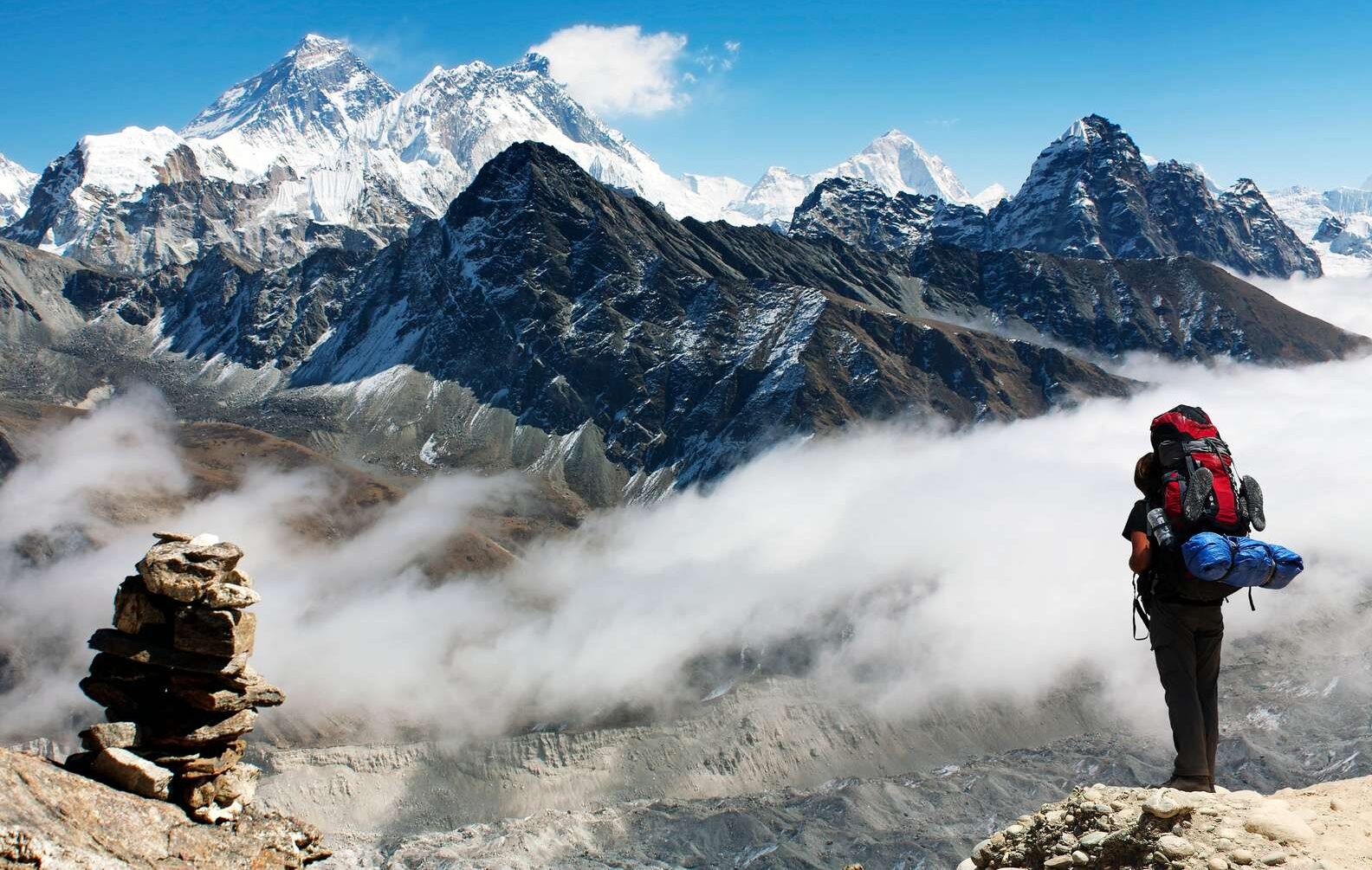Why Choose the Ghorepani Poonhill Trek in Monsoon Season?
The Ghorepani Poonhill Trek is a popular trekking route in the Annapurna region of Nepal, renowned for its stunning panoramic views and rich cultural experiences. While many trekkers opt for the more predictable weather of spring and autumn, trekking during the monsoon season offers a unique and rewarding adventure. Here are compelling reasons to consider the Ghorepani Poonhill Trek in the monsoon season:
1. Lush, Vibrant Landscapes
The monsoon rains breathe life into the forests and fields, transforming the landscape into a lush, green paradise. The rhododendron forests are especially vibrant, with blooming flowers and verdant foliage. The scenery is more dynamic and picturesque, offering photographers and nature lovers a unique opportunity to capture the beauty of the region.
2. Fewer Crowds
One of the most significant advantages of trekking during the monsoon season is the reduced number of trekkers on the trail. Popular routes like the Ghorepani Poonhill Trek can become quite crowded during peak seasons, but the monsoon offers a more serene and peaceful experience. You can enjoy the tranquility of the mountains and connect more deeply with nature.
3. Unique Wildlife and Flora
The monsoon season brings a burst of life to the region, with unique wildlife and diverse flora thriving in the wet conditions. You may encounter various species of birds, butterflies, and insects that are less visible during the dry seasons. The trail is adorned with blooming wildflowers, adding color and vibrancy to your trek.
4. Cultural Immersion
Trekking during the monsoon allows for a more authentic cultural experience. You’ll have more opportunities to interact with local communities, as there are fewer tourists. This can lead to richer cultural exchanges and a deeper understanding of the Gurung and Magar cultures. You may also witness local festivals and traditional practices that take place during this time of year.
5. Refreshing Climate
Despite the frequent rain showers, the monsoon season brings a refreshing break from the heat. The temperatures are generally cooler, making the trekking conditions more comfortable. The rain can also clear the air, providing crisp and clear views of the surrounding mountains and valleys.
6. Economic Benefits
Traveling during the off-peak season can also be more economical. Accommodation and trekking permits may be cheaper, and you might find better deals on flights and other travel expenses. Supporting the local economy during the monsoon season helps communities that rely on tourism year-round.
7. Enhanced Adventure
For those seeking a bit more adventure, the monsoon season adds an extra element of excitement to the trek. Navigating the trails in wet conditions can be challenging but also rewarding. The sense of accomplishment after completing the trek under these conditions is unparalleled.
8. Spectacular Sunrises
The Poonhill viewpoint is famous for its sunrise views, and the monsoon season can offer some of the most spectacular sunrises. The play of light and shadow on the mountains after a rain shower can create breathtaking scenes, with the peaks of Annapurna and Dhaulagiri bathed in golden hues.
9. Sustainable Tourism
Trekking during the monsoon season can contribute to sustainable tourism by reducing the pressure on the environment during peak seasons. By distributing the influx of tourists more evenly throughout the year, the environmental impact is minimized, helping to preserve the natural beauty of the region for future generations.
10. Personalized Experience
With fewer trekkers on the trail, you’re likely to receive more personalized attention from guides and hosts. This can enhance your overall experience, providing you with tailored insights and a more intimate connection with the local culture and environment.
Choosing the Ghorepani Poonhill Trek in monsoon season offers a unique and enriching adventure. The lush landscapes, fewer crowds, cultural immersion, and economic benefits make it an attractive option for those looking to explore the Annapurna region in a different light.
Monsoon Season: An Unexpected Adventure
The monsoon season in Nepal spans from June to August, bringing with it warm temperatures and frequent rain showers. While this might deter some, the monsoon transforms the landscape into a lush, green paradise. The rain brings life to the forests and fields, creating a vibrant tapestry of flora and fauna. Plus, fewer trekkers on the trail mean you can enjoy the tranquility and immerse yourself in the beauty of the region.
Advantages of Monsoon Trekking:
- Lush Landscapes: The rain revitalizes the environment, making the forests and fields more vibrant.
- Fewer Crowds: Enjoy a more peaceful trekking experience with fewer tourists on the trails.
- Unique Wildlife: Witness the diverse flora and fauna that thrive during the monsoon.
- Cultural Festivals: Experience local festivals and cultural events that take place during the monsoon season.
Preparation and Packing Tips for Monsoon Trekking
Trekking in the monsoon requires a bit more preparation, but with the right gear, you can have a comfortable and enjoyable experience. Here are some essential items to pack:
- Rain Gear: A high-quality rain jacket and waterproof pants are crucial. Look for breathable materials to stay comfortable.
- Footwear: Waterproof trekking boots with good grip are essential. Pack extra pairs of socks to keep your feet dry.
- Backpack Cover: Ensure your backpack has a rain cover to keep your belongings dry.
- Clothing: Opt for quick-dry clothing and pack multiple layers. Avoid cotton as it takes longer to dry.
- Insect Repellent: Protect yourself from mosquitoes and other insects. Anti-leech socks can also be helpful.
- Trekking Poles: These can provide stability on slippery trails.
- Health Supplies: Carry any necessary medications and a basic first aid kit. Drink purified water to stay hydrated.
Additional Tips:
- Plan for Extra Time: Monsoon rains can cause delays, so plan for extra time to complete your trek.
- Hire a Guide: A local guide can help you navigate the trails safely and provide valuable insights into the region.
- Stay Informed: Keep an eye on weather forecasts and be prepared to adjust your plans if necessary.
What to Expect on the Trail During Monsoon
During the monsoon, the Ghorepani Poonhill trail comes alive with the vibrant colors of blooming flowers and lush greenery. You might encounter occasional challenges like muddy paths and leeches, but these are minor inconveniences compared to the rewards. The air is fresh, and the scenery is more dynamic than during the drier seasons. Key highlights include the villages of Ghorepani and Tadapani, as well as the iconic sunrise view from Poonhill.
Key Points of Interest:
- Nayapul: The starting point of the trek, where you begin your journey through terraced fields and charming villages.
- Tikhedhunga: A picturesque village known for its beautiful waterfalls and traditional stone houses.
- Ulleri: A steep climb leads to this village, offering stunning views of the surrounding hills.
- Ghorepani: A major stop on the trek, Ghorepani offers comfortable lodges and access to the famous Poonhill viewpoint.
- Poonhill: The highlight of the trek, offering panoramic views of the Annapurna and Dhaulagiri ranges at sunrise.
- Tadapani: A serene village surrounded by lush forests, providing a peaceful retreat.
Accommodations and Facilities
Even during the monsoon, the tea houses and lodges along the trail remain open and welcoming. These accommodations provide basic but comfortable services, including warm meals, cozy beds, and Wi-Fi in some locations. It’s advisable to book in advance during the monsoon to ensure availability and secure the best spots.
What to Expect from Tea Houses:
- Warm Hospitality: Local hosts provide warm and friendly service, making you feel at home.
- Basic Amenities: Expect basic rooms with shared bathrooms. Some tea houses offer hot showers for an additional fee.
- Food: Enjoy traditional Nepali meals like dal bhat (lentil soup with rice) and momo (dumplings). Most tea houses also offer a variety of international dishes.
- Wi-Fi and Charging: Some tea houses provide Wi-Fi and charging facilities for a small fee.
Cultural Highlights
Trekking through the Ghorepani Poonhill route offers a chance to interact with the local Gurung and Magar communities. These villages are rich in culture and tradition, offering insights into their way of life. During the monsoon, you might even witness local festivals and celebrations. Don’t miss trying traditional Nepali dishes like dal bhat and momo.
Cultural Experiences:
- Local Villages: Explore the traditional villages of the Gurung and Magar communities, known for their unique architecture and cultural practices.
- Festivals: Experience local festivals such as Ropain (rice planting festival) and Teej (a women’s festival) that take place during the monsoon.
- Handicrafts: Support local artisans by purchasing handmade crafts and souvenirs.
- Traditional Music and Dance: Enjoy traditional music and dance performances that reflect the rich cultural heritage of the region.
Sustainability and Responsible Trekking
The monsoon season can be particularly sensitive for the environment, so it’s important to minimize your impact. Carry reusable water bottles, avoid plastic, and stay on designated paths to protect the fragile ecosystem. Our guides are trained to ensure that our trekking practices are environmentally friendly.
Tips for Sustainable Trekking:
- Carry Reusable Items: Use reusable water bottles and utensils to reduce plastic waste.
- Leave No Trace: Pack out all your trash and leave the trail as you found it.
- Stay on Trails: Stick to marked trails to prevent erosion and protect plant life.
- Support Local Communities: Buy local products and use local services to support the communities you visit.
Conclusion
Trekking the Ghorepani Poonhill trail during the monsoon season is a unique experience that offers lush landscapes, fewer crowds, and a deep connection with nature. With careful preparation and a spirit of adventure, you can enjoy this trek to the fullest. Book your monsoon trek with The Himalayan Treks today and embark on an unforgettable journey.
Contact Information:
- Email: sales@thehimalayantreks.com
- Phone: +977-9851138875
FAQs
1. Is it safe to trek during the monsoon season?
Yes, with proper preparation and the right gear, trekking during the monsoon can be safe and enjoyable. Hiring a local guide can also enhance your safety.
2. What should I pack for a monsoon trek?
Essential items include a rain jacket, waterproof pants, trekking boots, quick-dry clothing, insect repellent, and a backpack cover.
3. Will the trails be crowded during the monsoon?
No, the trails are less crowded during the monsoon, offering a more peaceful trekking experience.
4. How long does the Ghorepani Poonhill Trek take?
The trek typically takes 4-5 days, but it’s advisable to plan for extra time due to potential weather-related delays.
5. Can I book accommodations in advance?
Yes, it’s recommended to book tea houses and lodges in advance, especially during the monsoon season.



